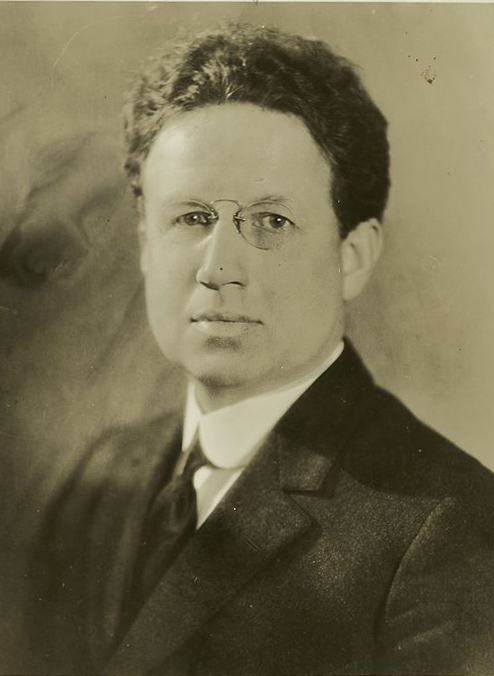He may not be a household name today, but a century ago Harry Emerson Fosdick frequently appeared in the pages of TIME Magazine, even making its cover. He saw what few others did — that Christian fundamentalism wasn’t a fading relic, but a resurgent factor that could alter the American future. In 1922, he rocked the religious world by asking this question in a sermon that “went viral” in its day: Shall the Fundamentalists Win? Are we finally arriving at the answer?
Rev,. Fosdick was a leading liberal Protestant intellectual, a proponent of a Christianity that called for tolerance, open-mindedness, civil rights, and ecumenism. His forward-leaning writings and radio sermons reached millions at a time when two divergent versions of Christianity competed for the hearts and minds of the American Christian. It felt like a Kentucky Derby of faith, and the race has continued for a hundred years.
In 1922, the fundamentalists were staging a comeback around the five fundamental doctrines they had published in 1910. But Rev. Fosdick activated the Protestant Mainline and the swelling social gospel movement gave them momentum to surge ahead. In 1925, the fundamentalists pulled out front in a show of political power by outlawing evolution in public school curricula in Tennessee. The Scopes Monkey Trial backfired and the fundamentalists again seemed to be falling behind into a period of public embarrassment and retreat.
The Mainline lead continued when the stock market crashed and most Mainline clergy had praise for FDR organizing the nation in love for neighbor. In fact, on October 6, 1930, Harry Emerson Fosdick greeted the nation from the cover of TIME Magazine. But conservative clergy were organizing against the New Deal and by the late 30s, they were laying the foundation for a new alliance between conservative Christianity and America’s corporate titans.
With the bombing of Pearl Harbor, the Protestant Mainline took the lead again as the party of patriotism and support for the war. By 1948, it was American Reformed theologian and ethicist, Reinhold Niehbur, on the cover of TIME Magazine.
By 1954, the race was shifting. Billy Graham made his debut on the cover of TIME. His upbeat crusades were putting the fun back into Fundamentalism, which was rebranding itself as Evangelicalism.
We could trace this race through the 60s, 70s, 80s and 90s to 9/11, with the iconic TIME Magazine cover often signaling shifts in who had the lead. Then came Fundamentalism’s greatest win of the last one hundred years. Spurred on by anxiety, outrage, and animus, Fundamentalism became the warhorse on which Donald Trump staged his triumphal ride into Washington. And we might just interpret January 6, 2021, as an example of how far Fundamentalism will go to hold onto its lead.
I am a refugee from the Fundamentalism Fosdick warned us about and I eventually found refuge in the Mainline. I had great hope that Mainline Protestantism could rise to today’s challenges, and I’ve worked hard writing, speaking and organizing, to encourage Methodists, Presbyterians, Episcopalians, Lutherans, and allies to seize the moment.
But a few years ago, a Mainline minister pulled me aside. “McLaren,” he said, “you’re so naive. You’re right: fundamentalists were rigid in their doctrines. But we Mainliners are just as rigid in other ways. We’re liturgical and institutional fundamentalists. You have high hopes for us, and I once did too, but when I look around today, I see most of us Mainliners are keeping busy micromanaging our own decline.”
Thinking they’ve been winning all along, Mainliners have remained comfortable and complacent, allowing Christian Fundamentalism to metastasize by combining forces with its economic, political, educational, and constitutional counterparts. With increasing influence, they speed down the straightaway denying science, undermining democracy, subverting the Constitution, seeking to reverse a century of progress in social justice, and threatening our future by refusing to face the five fundamentals we all now face. Largely unimaginable in Fosdick’s day, these new fundamentals are no longer doctrinal, they’re existential: nuclear weapons and other weapons of mass destruction; climate change and a multifaceted environmental catastrophe; a resurgence of vicious white Christian supremacy; a form of capitalism so successful that it is not only too big to fail, it is too big to control; and the concentrated power of a small cadre of global oligarchs who buy candidates, governments, and media outlets, and use them for their own kleptocratic purposes, including invading countries and threatening World War III.
Over this last century, things have often gone, not as Rev. Fosdick hoped, but as he feared.
Were he here today, I think he would challenge all non-fundamentalists — Christian and otherwise — with a very practical path forward. He would challenge us to wake up every day realizing that five fundamental threats are breathing down our necks. He would challenge us to out-think, out-organize, out-give, out-strive, out-love, and out-last our fundamentalist counterparts in the 21st Century. He would challenge us to start acting like we’re losing, because we are.

